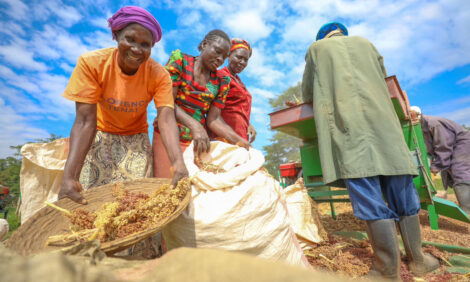



Highlights from Rabobank's Global Animal Protein Outlook 2023
Deciding how to grow amid challenges and opportunitiesEven though global animal protein production is expected to grow modestly in 2023, it will be another year of change for the sector. The industry will face high costs along the full supply chain, swings in consumption, and other areas of uncertainty for producers, such as elevated disease pressure and regulatory and market-driven changes. As a result, margins will be squeezed as buyers push back on higher production costs. But opportunities still exist, although they will be more restricted.
Global summary
We see growth favoring value-for-money products, efficient producers and processors, agile companies, exporters advantaged by FX movements, and biosecure producers.
“Some animal protein companies will see 2023 as a year to recalibrate their growth expectations and plans,” says Justin Sherrard, Global Strategist – Animal Protein. “Some companies will maintain a near-term focus and strengthen agility so they can roll with the cyclical changes. Other animal protein companies will focus on longer-term growth and start investing and positioning for success given the structural changes ahead.”
The overall trend for 2023 is for production growth to slow further, with small gains in some regions but contraction in others for the main terrestrial species. Slow growth is expected in China across all species groups, and ongoing growth is expected in Brazil and Southeast Asia. Oceania will experience slow growth, while North American and European production will contract.
Aquaculture leads global growth across the species groups, once again, and its continuing expansion is supported by its relative independence from agri commodity prices.
Poultry is set to maintain its consistent growth pattern, wild catch is set to expand slightly, beef production will decline slightly, and pork will see a decline.
Rabobank clients can download the full report
Some key points from the outlook for animal protein in 2023
North America
Beef will contract as the US cycle turns and enters a multiyear decline, and poultry will expand on strong demand, despite disease pressure, while pork stabilizes.
Europe
Production will come under pressure for all species, on disease risks, market and regulatory-driven changes, and reduced exports. Consumption is expected to hold steady, with poultry benefiting while pork and beef will decline slightly.
China
Pork production will see marginal growth, with foodservice restrictions still suppressing demand. Poultry is expected to expand slightly, held back by high costs and uncertainties. Beef will ease.
Brazil
Beef production will continue to expand, supported by exports. Chicken and pork production are also set for expansion and export gains.
Southeast Asia
Pork production is expected to recover in Vietnam and the Philippines as ASF risks recede. Poultry production is also expanding, slowly, as demand channels continue to recover.
Australia & New Zealand
Australia’s beef and sheepmeat production is expected to expand on the back of herd/flock dynamics. In New Zealand, however, beef and sheepmeat production is expected to decline on market pressure.
Salmon
A strong retail presence will support prices in 2023, despite weakening macroeconomic fundamentals.
Shrimp
Supply remains strong, despite lower prices and higher costs. Ecuador and Latin America are expected to continue driving farmed shrimp supply in 2023.
Fish Meal and Fish Oil
Prices of competing commodities support prices for both, which may ease slightly in 2023.
Alternative Protein
2023 will be a year of consolidation. The recent stellar growth of plant-based products is on hold, and investors are shifting focus.








